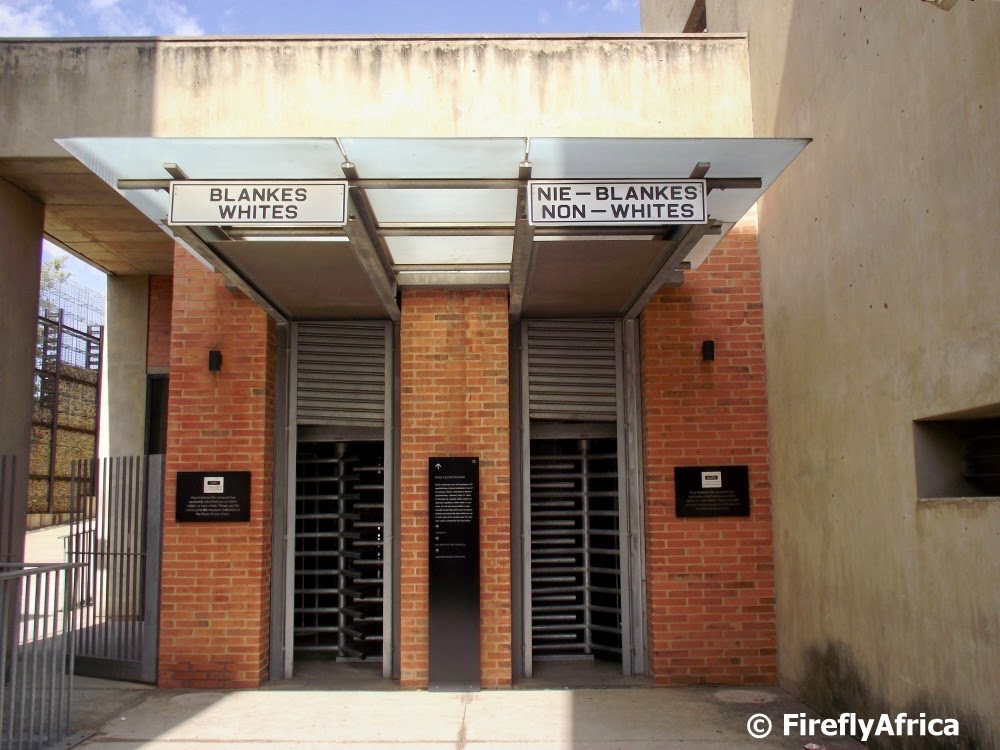The Apartheid era is a part of the South African history that will never go away. It shaped South Africa’s past and future to what it is today and the results of it will be seen for generations to come. Even though it isn’t something that should be celebrated it is something that must be remembered to make sure such things will never happen again. Ja, ja, I can already hear comments about some of the situations we find ourselves in today, but that isn’t what this post is about. This post is about the Apartheid Museum next to Gold Reef City in Johannesburg. I have always wanted visit the museum and that opportunity presented itself to me late last year while I was in Jozi for the Lilizela Awards. I have to be honest when I say it probably isn’t everybody’s cup of tea, but it does tell the story of Apartheid in detail and is of particular interest to anybody who would like to learn more about the country’s history. This is probably also where the biggest problem in the museum lies. They are trying to convey too much information which means you could be in there for literally hours trying to read all the info throughout the exhibits. I would have liked to see more interactive and visual representation and less writing, but what is there and gets conveyed has a very powerful and moving message. My intention isn’t for this post to contain anywhere close to the same amount of writing but to rather be more of a photographic tour.
When visitors arrive at the museum your entry ticket randomly classify you as White or Non-White which then dictates to you which entrance to use…. unless you want to be defiant…
I was hugely impressed with the exhibition celebrating the life of Nelson Mandela. I realize that the Apartheid struggle was so much more and bigger than Madiba himself, but he is the one who shaped the transition into a new democratic South Africa peacefully and deserves all the credit he is given as such. Plus even though us South Africans may sometimes feel a bit of a Mandela overload, that is what international visitors want to see.
The Mandela exhibit contains not just a lot of information on Madiba’s life but also photos and artifacts like his boxing gloves in the above picture. The Mandela Museum in Mthatha contains a lot of artifacts pertaining to his life and I would really have liked to see this exhibition having more of that as well, but what they had did had visitors glued to the exhibition.
Photographs are not ordinarily allowed in the museum but I was very fortunate that my visit was organized by Gauteng Tourism and I received media accreditation on my arrival allowing me to take photos. The guy in the photograph is an security guard who saw my camera and very politely reminded me that photographs weren’t allowed. I showed him the accreditation card I was given and immediately told him that I wanted to take a picture and needed a human subject in it. As there was nobody else around at that stage I roped him in and after some directing I got the pic I wanted.
One of my favorite parts of the museum was as you exited the Mandela exhibition. There was a number of Madiba quotes divided into categories. Visitors are then encouraged to select their preferred quote and take a stick of that colour to place in bins in the garden just outside. I selected the following one:
Non-Racialism
“I detest racialism
because I regard it as a
barbaric thing, whether
it comes from a black
man or a white man.”
I made sure I got to the museum just after opening time so that I could make my way through before the crowds arrived. As a South African I know most of the history of the Apartheid era so I didn’t spend that much time reading through the info. I rather made sure that I got to see all the other exhibits and try to get photos of it before to many people arrived.
One of the most striking visual parts of the exhibition for me was a Police Casspir which formed part of an exhibit on the 1976 student uprising. Imagine one of these coming at you.
I don’t want to end off the post with the usual “I really would like to encourage everybody to try and visit the museum at least once” because it gets a little
cliché but, you know what, I would really like to encourage everybody to visit the museum at least once. It contains a wealth of information and history, which could be a slight information overload if you overdo it, but I promise you that even if you think you knew it all you will still learn something or at least be moved in some way.
cliché but, you know what, I would really like to encourage everybody to visit the museum at least once. It contains a wealth of information and history, which could be a slight information overload if you overdo it, but I promise you that even if you think you knew it all you will still learn something or at least be moved in some way.
Disclosure: I was in Johannesburg as a guest of the Tourism Grading Council of South Africa as one of the judges of the Lilizela Tourism Awards. My visit to the Apartheid Museum was organized by Gauteng Tourism. I received no further remuneration and keep full editorial control over the post.










Great photo tour and invitation to learn more.
I had no idea that such an exhibition existed. A wonderful way to highlight the rugged journey of apartheid. And a great idea about the separated entry tickets. Fascinating photos.